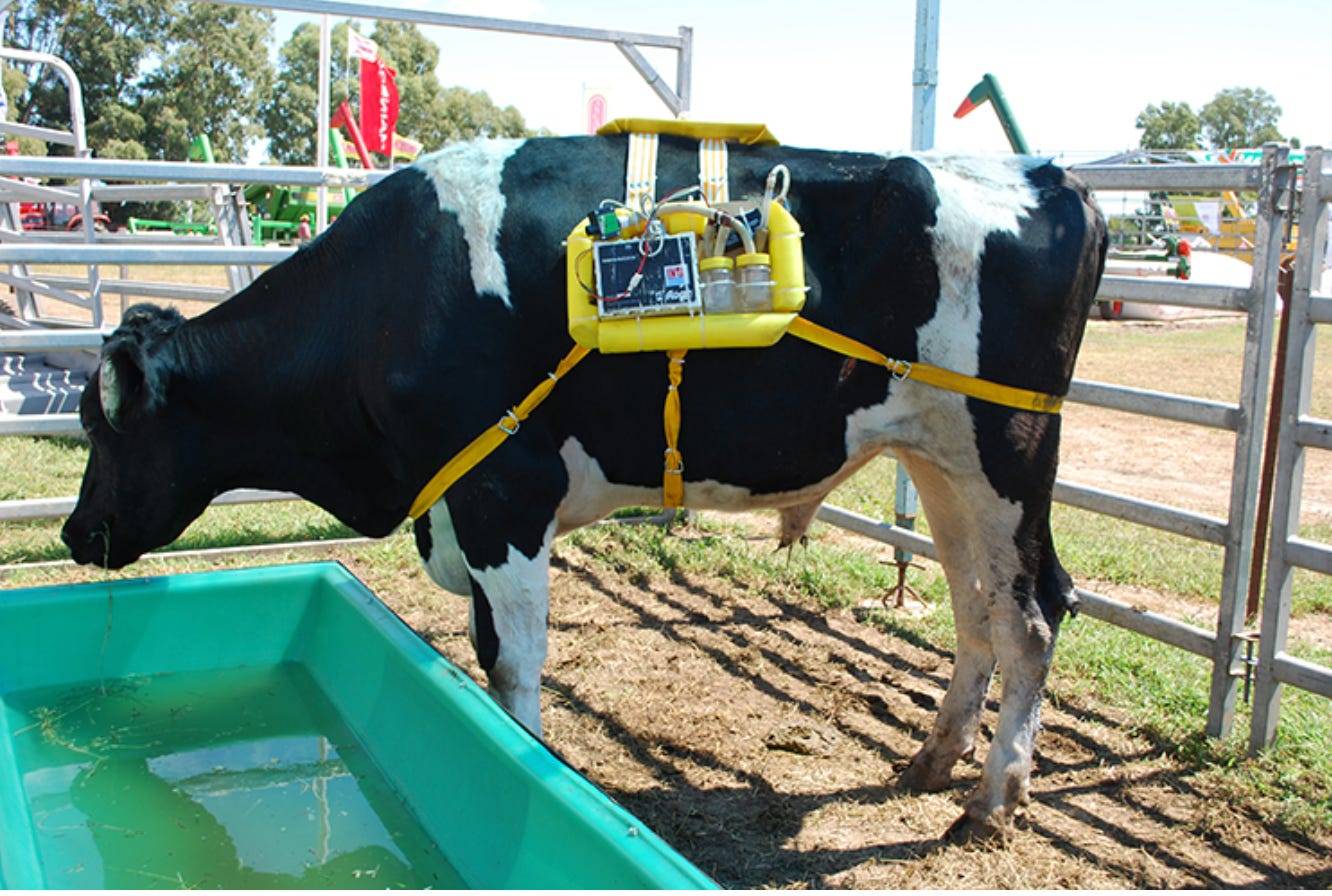Permian Basin Methane Emissions Remain Low Despite Near-Record Production
No need for methane capture.
“Backpacks for cows capture their fart gas and store it for energy”
The industry group “Texans for Natural Gas,” TFNG, recently released a report titled “Methane Emissions In Texas’s Permian Basin Remain Low Despite Near-Record Production.” The Odessa American highlighted that report in an article on April 3, 2025, titled “Methane emissions in Texas continue decline amid near-record production.”
Texans for Natural Gas is a public relations group commissioned in 2014 by a group of energy companies operating in the Barnett Shale, led by Steve Everley. Steve is now Senior Director of FTI Consulting’s Energy and Natural Resources Practice in Washington, D.C. TFNG is now under TIPRO, the Texas Independent Producers and Royalty Organization. As Executive Director of the Barnett Shale Energy Education Council from 2007 to 2017, I worked closely with Steve. Our paths still cross occasionally, and I always enjoy reading his articles. He frequently writes on LinkedIn, and I highly recommend reading his work.
The issue around methane emissions dates back to the anti-natural gas campaign during the shale revolution, which claimed that methane emissions are harmful because they trap heat in the atmosphere, contributing to climate change, and therefore must be eliminated. Since methane makes up 0.00019 percent of the earth’s atmosphere, this theory is debatable. Recent research has shown that methane may not warm the earth as much as previously thought because methane absorbs both longwave and shortwave radiation, which offsets climate effects.
Nevertheless, the Biden EPA used the “methane is bad” argument to justify their illegal pause on LNG export facilities in 2024. (See my Substack article titled U.S. LNG exports expected to surge in 2025 despite the 2024 illegal ban on permitting new LNG export facilities). The “methane is bad" argument has become what some would consider a mental illness, with true believers calling for cows to wear flatchluent-capturing devices as pictured above.
The war on methane ramped up in 2015 when the Obama EPA proposed expensive and unachievable methane rules in their “Clean Power Plan.” I testified before an EPA hearing on their proposed methane rules on September 15, 2015, in Dallas, Texas, saying this:
The proposed new EPA rules pose a direct threat to the shale energy revolution that is strengthening U.S. energy security while reducing energy costs for all Americans. Even worse, the rules the EPA proposes are largely a Washington-designed solution searching for a problem. EPA’s data show that methane emissions from oil and gas exploration and production are only 1.07 percent of total U.S. greenhouse gas emissions, meaning that methane regulations would impose new costs for minimal benefit.
Second, at least five recent peer-reviewed studies found methane “leaks” from natural gas development are already well below the 3.2%, the rate at which scientists believe natural gas may lose its greenhouse gas advantage.
Third, according to EPA’s own data, natural gas producers have reduced methane emissions by 35% since 2007, even as production increased by more than 20% over the same period.
The enormous new supplies of clean-burning natural gas unlocked by fracking have helped the electricity-generating sector replace older coal-fired plants, reducing carbon dioxide emissions to their lowest level in 20 years.
The EPA would do better to pursue a more balanced and cooperative approach that doesn’t threaten to undermine the significant progress already underway.
The EPA did not listen to me or anyone else arguing that their proposed rules were expensive and unachievable, and finalized the Clean Power Plan on August 3, 2015. The U.S. Supreme Court issued a stay in February 2016, halting its implementation while legal challenges from 27 states and industry groups were litigated. President Trump ended the war on methane with the signing of an executive order on March 28, 2017, titled "Promoting Energy Independence and Economic Growth,” until the Biden Administration’s EPA brought it back. In his second term, President Trump shot down the war on fossil fuels with his 2025 Day One executive orders “Unleashing American Energy” and “Declaring a National Energy Emergency.”
My Take
After working diligently to reduce methane emissions, the U.S. oil and gas industry has made significant progress through the use of non-venting pressure relief valves, FLIR thermal imaging infrared cameras, and other technological advances. Doing so makes good business sense and is good public relations.
The election of Donald Trump as President for the second time has upended the decades-long war on fossil fuels, although it is still lurking. President Trump, Energy Secretary Chris Wright, and the entire Trump Administration promote the positive philosophy that fossil fuels are the key to economic development and human flourishing and must be made available to everyone. At least for now, the war on fossil fuels in general and methane in particular has been suspended at the federal level.
Thank you for reading “Thoughts about Energy and Economics.” This publication is reader-supported, so please “Like” it, share it with friends and colleagues, and become a paid subscriber. Your support is greatly appreciated!
.





I agree, great summary . . . however paragraph 3 « Since methane makes up 0.04% of earth's atmosphere, this theory is debatable » — carbon dioxide, CO₂ is ~0.04% (~420 parts per million by volume) and methane CH₄ is 0.00017% (1.7 parts per million by volume) — even more debatable !
Excellent review, Ed. I want to send you the photo of Prince Charles and his cow mask invention.